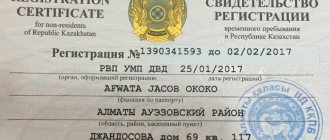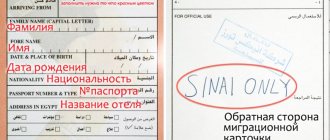Main types and categories of work visas.
All visas for employment abroad are designated in Latin letters according to the level of opportunity:
- C – short-term work visa, valid for 5 years, you can stay in Europe for up to 3 months in six months. You cannot work fully with such a visa; in fact, it is a tourist visa; for permanent stay you need to get another visa.
- D – long-term national visa does not limit stay in Europe for the entire period of validity. This visa can be used during the interview and probation period at work. It ensures the legality of work in the state that issued the residence permit.
There are several ways to get a visa with the highest possible probability:
- You have invitations from a foreign employer company;
- Have experience of successfully staying abroad for work purposes;
- Having a higher education in the specialty that your future work is related to, in which case you are automatically included in the unofficial register of young and promising qualified specialists;
- If you have received higher or secondary education in a foreign country.
During the period of obtaining a visa, travel to the territory of other countries in the Schengen zone is allowed on an unhindered basis, but for a short time. Getting a job in a European country and receiving future income or profit is only possible if you have a working category visa and a sample visa.
Work permit in the Czech Republic
Obtaining a work permit that will allow a foreigner to work legally in the Czech Republic is not so simple. First of all, the employer opens a vacancy on the employment exchange, for which Czechs can apply.
After a period of 30 days to 3 months has passed (this is due to the high level of unemployment in the Czech Republic), the employer submits an application to the Ministry of Labor stating that the local population for some reason is not suitable for this vacancy.
After this, the Ministry of Labor issues a work permit.

This is what a Schengen work visa to the Czech Republic looks like
There are other ways to work in the Czech Republic - Labor and Blue Cards of the European Union. However, all three documents (including the work permit) have some differences.
- The work permit, which is issued in conjunction with a work visa, does not have any requirements for the qualifications of the applicant. This means that you can even get a job as a low-skilled employee.
- Employee registration. Having a work permit does not automatically give visitors the opportunity to do work without a work visa.
- The employer submits a preliminary application to the Ministry of Labor stating that he is ready to hire a citizen of another country.
A work permit is issued for a maximum period of 2 years.
Procedure for obtaining a work visa.
Before submitting documents, make sure you have an employment option. This can be a full-time employment with the signing of a contract, work for a certain period, a long-term business trip, or employment as a highly qualified specialist, which is highly valued by a foreign country. It is better to additionally provide the embassy with an invitation from the employer. Often, a visa can be obtained with reference to one company of work. If you are fired from there, your visa may be canceled if you try to get another job on the spot.
The algorithm for obtaining confirmation to work on a work visa is as follows: you negotiate with a potential employer, make sure of his ability to invite foreign citizens to work (copies of these papers will be a big plus when considered at the embassy), receive a letter of invitation (or a sample contact for signing ) and first begin to collect a package of documents to submit in order to save valuable time.
When visiting an embassy or consulate in person, a candidate for a work visa will be asked to provide biometric data - a digital photo and fingerprints. This rule is common when visiting a European country for the first time under the Schengen Agreement.
What documents are needed for a work visa.

Each embassy has its own requirements for obtaining a work visa. But these are just additional factors. The main list is used by almost all consulates of the most popular countries for labor tourism:
- Internal and foreign passports with copies of the pages marked in the documents;
- A completed visa application form;
- Signed invitation from the employer;
- 2 photographs (requirements for the size and rules of face placement may be different, it is better to find out about this in advance);
- Certificate of registration of the company where you plan to work;
- Diploma of completed higher education;
- Insurance with coverage for several weeks of stay in the country. It must be valid until the foreign employee is provided with a new type of insurance policy from the new country;
- Confirmation of the availability of funds for the first time of stay, as well as a place to stay.
- Confirmation or receipt of payment of the consular fee.
Additional documents include, for example, no criminal record, a medical certificate confirming the absence of contagious diseases (including tuberculosis), as well as documents about marital status and children.
Also, in addition to documents, the embassy practices a personal interview with the applicant, during which they may ask about the purposes of the visit and job prospects. Based on the results, a recommendation is made for obtaining a work visa.
How to get a work visa?
The opening of work visas is carried out taking into account the requirements of the country chosen as suitable for work. The standard procedure follows the following sequence of actions:
- Take care of obtaining a work permit. To do this, you will need to conclude an employment contract with a foreign organization. You can find an employer on your own - just post your resume on international specialist search sites.
- Collect and translate documents for a work visa.
- Get health insurance. When sending a request for employment in Europe, the amount of coverage is 30 thousand euros.
- Fill out the form. The presence of errors or omissions is unacceptable, so you should enter information with all care.
- Pay the mandatory fees - consular and service (if necessary).
- Make an appointment at the consulate. This can be done through a special form on the official website of the representative office or by calling a contact phone number.
- Come to the office at the appointed time to submit documents.
- Wait for a decision. It is not uncommon for review results to become available only after several months, so it is worth being patient.
- After receiving the notification, visit the consulate again to obtain a visa.
Note! In some countries, applying for a work visa requires an additional interview; in others, it is mandatory to fill out additional forms indicating data on success in educational and work activities.
Cost of a work visa.
The average cost of a visa fee is 80 euros. This is the new cost that will be rolled out from 2021. Further, the cost of the visa itself may change. So, for a work visa you need to pay about 60 euros. The same amount will be requested when entering the Czech Republic and the Baltic countries (Estonia, Lithuania, Latvia). A work visa to Finland costs about 100 euros. In countries such as Germany, France, Spain and Italy, be prepared to shell out up to 150 euros. Be prepared to shell out an additional 20 euros for the preparation of documentation and copies of papers, as well as translation into a foreign language. Typically, the cost of a work visa is slightly higher than that of a tourist visa.
Validity of work visa
The validity period of a work visa depends on its type. A single-entry work visa is issued for a period of up to three months with the possibility of subsequent extension. Upon extension, the foreigner is issued a multiple-entry visa.
A multiple-entry ordinary work visa is issued for the duration of an employment contract or civil contract, but for no more than three years, with a subsequent extension of its validity for the duration of the contract (Clause 7, Article 25.6 of the Law of August 15, 1996 No. 114- Federal Law “On the procedure for leaving the Russian Federation and entering the Russian Federation”, paragraph 35 of the Regulations, approved by Decree of the Government of the Russian Federation of 06/09/2003 No. 335).
Time limit for obtaining a work visa. For what period is a work visa issued?
All dependencies on the selected country. But in most cases, the period is 12 months, plus there is a simplified procedure for extending it for another year. The visa itself is issued no earlier than 4-5 days, but no more than 2 weeks.
The waiting period for readiness depends on the need to coordinate issues related to the internal departments of the embassy of the host country, as well as on the fact and duration of early stay in this country.
Separately, it is worth noting Italy and Spain, where the full registration cycle can take 3 months.
Italy, Spain and Germany have established quotas on the entry of migrants due to the influx of refugees from Africa and the Middle East. Therefore, be as prepared as possible for the consideration in order to go through the procedure for registering your stay in such countries without long-term consequences.
What is a work Schengen visa
The classification of visas for entry into the Schengen zone, although not too confusing, still causes some difficulties in choosing the right one. The main gradation of visa stickers is built on the purpose of visiting the designated territory - A, B, C, D. And if the first three are more likely to be useful to those who do not intend to stay here for a long time (transit, tourism), then the last one is precisely relevant to the case under consideration.
Based on the name, a visa to work in Europe allows its holder to stay on its territory for a long time and carry out work activities. This possibility is allowed only by the stamp of the national category - D.
Unlike all other varieties, it allows non-compliance with the rule of staying in the Schengen zone for up to 90 days in each half-year and is issued for the duration of the employment relationship with a European employer.
Please note that none of the other stickers listed provide employment rights. Moreover, a work visa, classified as national, is valid only in the territory of the state that issued it. Accordingly, it is possible to get a job and live for the entire period given to the employee only in this country. Travel to other Schengen territories, although it will be unhindered, is still limited in time.
Conclusion: only a visa of the national category and only a working type allows you to get a job in the Schengen countries and earn income or profit. Therefore, the expression “Schengen work visa”, strictly speaking, is incorrect, although it is used everywhere.
New rules for issuing Schengen visas in 2021
In connection with the design of the new information system and on the basis adopted by the EU Council in June 2021, there have been some changes with the issuance of work visas, which cannot but be reported:
- The application can be officially submitted electronically;
- The application for a work visa must be submitted 6 months and no later than 15 days before the start of the trip;
- At the discretion of the embassy of each country, the cost of paying a visa fee for children from 6 to 18 years old can be regulated; under 6 years of age, the fee, as before, is not required.
In conclusion, let us summarize the above.
A work visa makes your dream of working abroad much easier. But you must have an official invitation from a potential employer who wants to hire you by concluding an employment contract. Most often, such a pleasant moment can be obtained by highly qualified specialists and workers of unique professions that a foreign country lacks; a niche in such a profession is in demand. You can see the current rates of 163 currencies with charts of their changes on the website of our partners currency.events.











